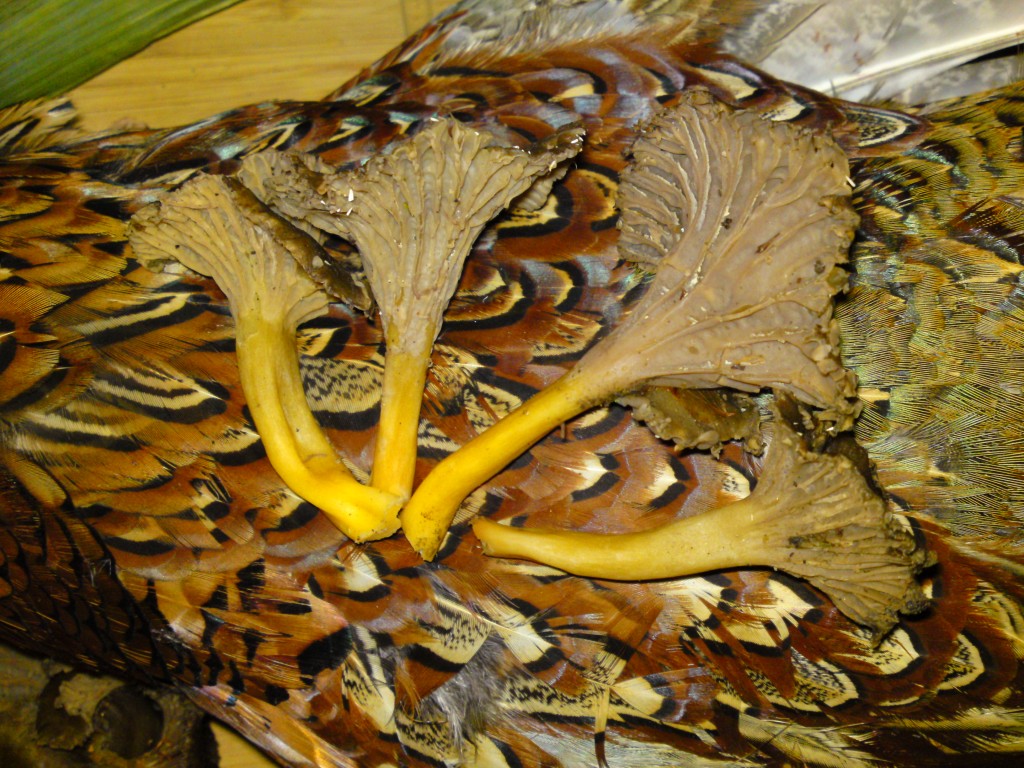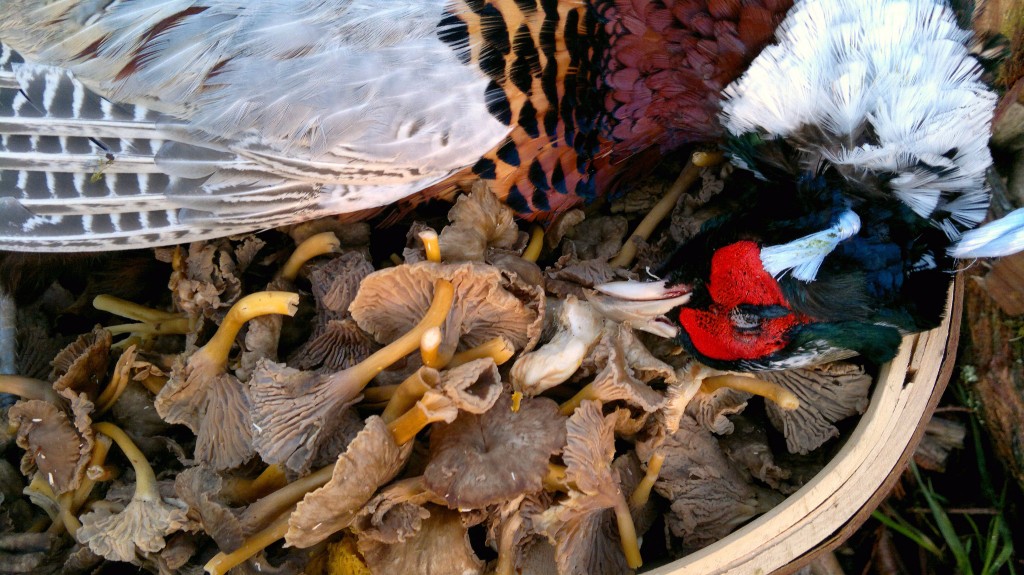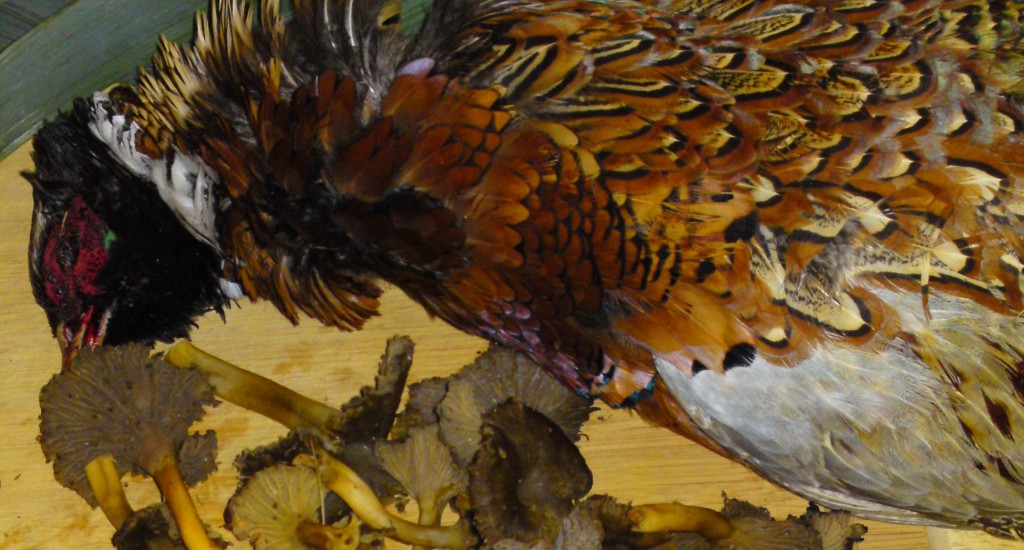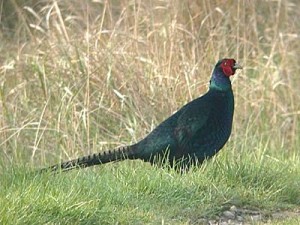Pheasants
.
The pheasants we encounter in Scotland (Phasianus Colchicus) are neither native or truly wild. Indigenous to Mongolia, they may have arrived here with the Romans as ornamental birds and were certainly a common sight in Britain by the C10th but were virtually extinct again by 1700.They were reintroduced around 1830 as ornamentation for wealthy country estates. Presumably, the fact that they waddle about in manageable areas and only fly under extreme duress – and at a nice speed and height for shooting – is why the trigger-happy victorians soon started rearing them as game birds. Apart from the odd tough feral bird, almost all the pheasants you encounter will be bred and fed (via those blue drums you so often see attached to trees) by gamekeepers, farmers or shooting collectives. The pheasant shooting season runs from October 1st to February 1st.
.
You may occasionally spot black pheasants – these are melanistic (the opposite of albino), the result of a mutant gene. In bright sun these males can exhibit iridescent electric blue and green sheens that can be even more beautiful than the usual array of reds and golds of their more common relatives.

Pheasant and winter chanterelles – two foods that share colouration and habitat and complement one another in the kitchen
However you come by your pheasant, preparing them for the table can be a messy business. I prefer to skin them as plucking invariably results in a blizzard of superfine down drifting across the kitchen. Skinning can exacerbate the lean meat’s tendency to dry out during cooking, so its worth plucking outside and holding your breath for a while if you want to roast them whole.
Lead Shot in Pheasants
Shot in pheasants can be more than just an inconvenience, as most UK shoots still use lead shot. The Food Standards Agency clearly states that “Eating lead-shot game meat on a frequent basis can expose you to potentially harmful levels of lead” and that” toddlers, children, pregnant women and women trying for a baby should not eat lead shot game”. As they say: “Anyone who eats lead-shot game should be aware of the risks posed by consuming large amounts of lead”.
This is sound advice, but does beg the question “what constitutes a “large amount”? Only you can really decide this. Personally I am very happy to continue consuming a few brace of pheasants per year. I examine them for shot as I butcher them (you can often locate it by the blood stains in the flesh). Even if a pellet slips through, the chances of swallowing a lead pellet are pretty slim. More likely you will have an unpleasant tooth-crunch experience. I suppose micro quantities of lead “dust” may make their way into your digestive system, but unless you are eating pheasant on a regular and year-round basis, its hard to imagine this amounting to “large amounts”.
- Recipe: Braised pheasant with winter chanterelles and root vegetables
- Recipe: Pheasant Kiev with wild garlic
- Edible beasties
- Winter
- Wild Food Recipes



6 Comments
Hi Tracey,
Wow, nice idea.
I don’t hunt much, but do have friends who do. If I come upon any melanistic feathers i’ll give you a shout.
Cheers
Mark
I’m new to your site and I must say I love it. You say when hunting season is for pheasant, but do you need a licence? Would like to find out these things before moving up from England. Thank you for some wonderful information!
Ayla
Hi,
You would need a gun license, and should definitely contact the landowner before shooting anything! Pheasants are carefully reared, usually by very protective gamekeepers.
Mark
I have one black pheasant joining in the breakfast frenzy in my garden in Palnackie.
We saw a black pheasant a couple of days ago whilst on holiday in the Cairngorms, strutting it’s stuff as it crossed the road, head held high, in front of our motorhome. Close shave! Didn’t realise we could get them in black – first I have seen this, very majestic & it lives to tell the tale!
Nice site. Thank you